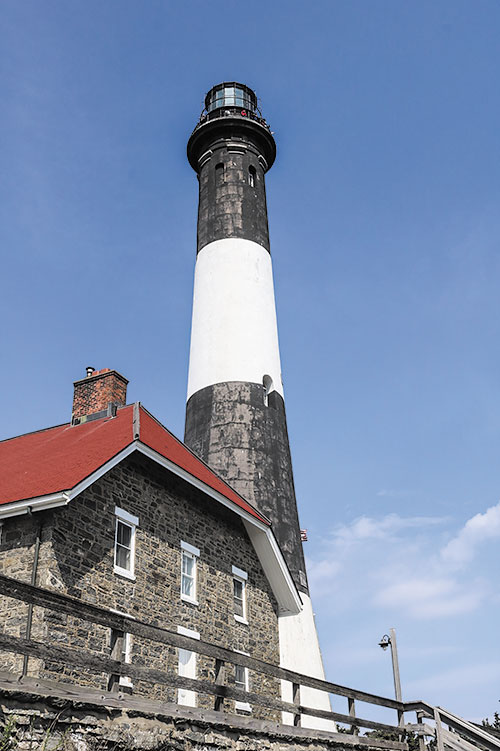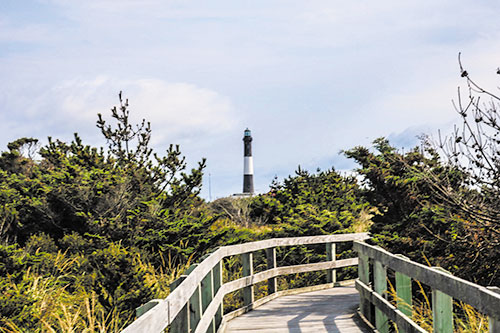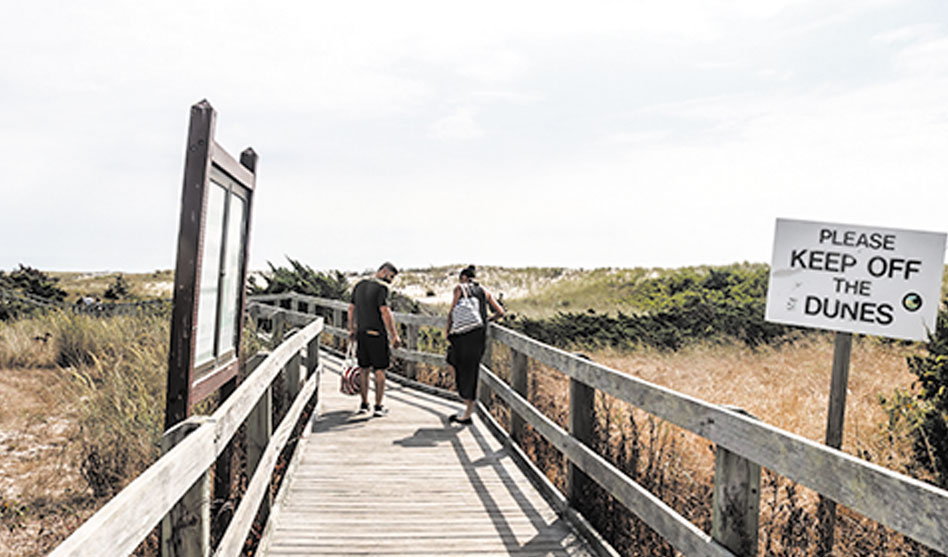Boardwalk through the dunes
A beach, a lighthouse and a walk through the dunes await visitors to the island’s western extreme
DAVID TAFFET | Senior Staff Writer
taffet@dallasvoice.com
I never knew you could drive to Fire Island — not to Cherry Grove or The Pines, the two very gay towns further out on the island, but to Robert Moses State Park and the western tip of the Fire Island National Seashore.
Typically, you take a ferry from Sayville, Long Island, to get to the best-known settlements on the island. But for a quick trip and a deep dive into the island’s history, drive to Robert Moses State Park, where the dunes and beach of the national seashore begin.
The centerpiece of this portion of the 32-mile long barrier island, which protects Long Island from rough ocean currents, is the Fire Island
Lighthouse. It was built on what was the western tip of the island in 1858, but sand deposits have lengthened the island westward by about five miles during the past two centuries.

The Fire Island lighthouse
To access the lighthouse and attached museum, drive to parking lot No. 5. Head toward the lighthouse to park for a dose of history or toward the beach if you’re there for a day of sun.
From the lot, walk down the boardwalk for the half-mile trek to the lighthouse, or take a pedicab which will also go to Kismet, the first town on the island located about a half mile further.
The original lighthouse, built in 1826 at a cost to the federal government of $10,000, stood 89 feet high and could be seen more than 14 miles out to sea. As shipwrecks continued to occur, the current black and white structure was built at four times the cost of the original, but it stands almost twice as tall with a light that can be seen more than 20 miles out to sea.
Robert Moses State Park occupies the first few miles on the western tip of Fire Island on land created by the action of the ocean currents. The lighthouse and museum in the old lighthouse keeper’s quarters are operated by the National Park Service. Both the north and south shore from the lighthouse to the island’s eastern edge in Moriches Bay are protected as the Fire Island National Seashore.
Of the more than 20 lighthouses along the shores of Long Island, the Fire Island Lighthouse is the tallest. Climb its 182 steps up the lighthouse to an open air viewing deck. On a clear day, Manhattan’s skyline is visible to the west.
When it was built, the beam emitted through the lens was the first manmade light transatlantic ship passengers saw before landing at New York Harbor.
The visitor center, operated by National Park Service, is where tickets can be purchased to climb the lighthouse stairs. It’s also a repository of historical information.
For instance, the name Fire Island seems to be a misspelling or perhaps a mistranslation. In its present form, the current name first appeared on a deed in 1789. Fire Island Beach appeared on charts dating from the 1850s. The legend that pirates built fires on the beach to lure cargo ships toward shore to wreck on the craggy seabed.

Scruffy pines along the boardwalk
More likely the name is a misspelling of the English number five or the Dutch word for four — vier — referring to the number of inlet islands in the area.
The area was declared a national seashore in 1964 to protect the only inhabited barrier island in the U.S. without roads for car traffic connecting the towns. In 1980, a seven-mile, 1,400-acre stretch of land was declared a national wilderness area.
Seagrasses protect the dunes, as do the scrubby pines. Additional fencing has been placed across much of the sand hills to help protect them from wind erosion. Get a good view of the dunes from the boardwalk.
Take Long Island’s Wantagh State Parkway south to Jones Beach. Head east on Ocean Parkway to the Robert Moses Causeway and head south to Fire Island. Head east and park in Robert Moses State Park Field 5. Then walk or take a pedicab to the lighthouse.












